6 Best Recipes For Sushi + Bonus Methods You’ve Never Tried
Love sushi and want to make it yourself?
Sushi is a delicious and healthy meal that can be made at home with a few simple ingredients. And I’ve selected some classics and a few cool ones you’ve probably never tasted before.
Everything from traditional rolls to modern twists on this classic dish. So roll up your sleeves and get cooking!
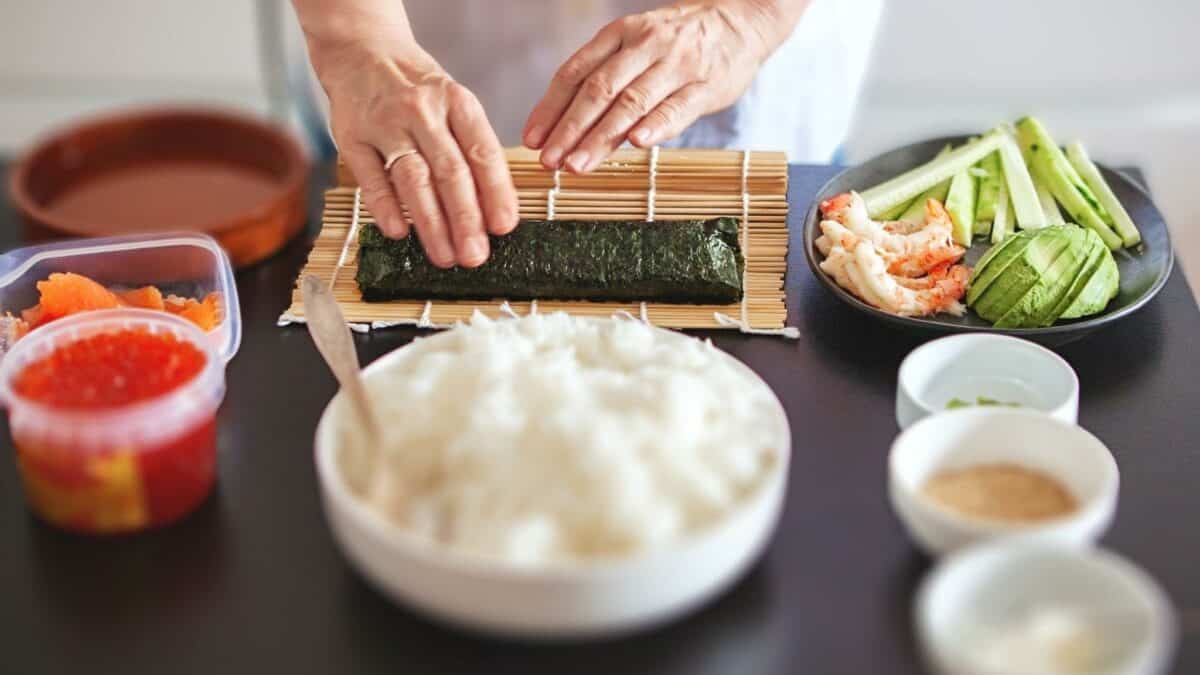

Check out our new cookbook
Bitemybun's family recipes with complete meal planner and recipe guide.
Try it out for free with Kindle Unlimited:
Read for freeIn this post we'll cover:
Best recipes for sushi
Salmon, avocado & cream cheese roll
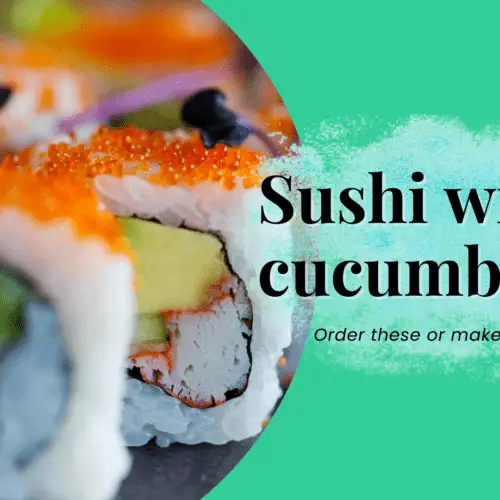
Place an even layer of sushi rice and smooth it out slowly and gently using a rice paddle. Next, top the rice layer with salmon, cream cheese slices, and avocado slices.
Roll up the ingredients into tight rolls. Slice them using a sharp yanagiba or other sushi knife and serve with soy sauce, wasabi paste, and pickled ginger.
You can use lox or smoked salmon if you don’t want to use the raw fish. Also, you can sprinkle some sesame seeds for added crunch.
Sushi maki California roll
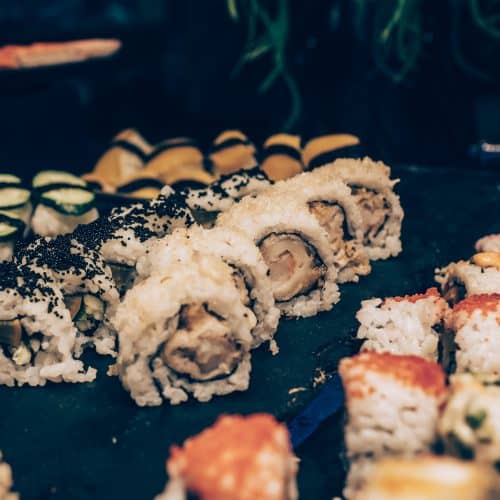
The California roll is an American invention or take on sushi rolls. It’s one of the most popular menu items at sushi restaurants across the Western world.
It’s not difficult to make, so you can actually make it at home!
Oshi sushi with salmon
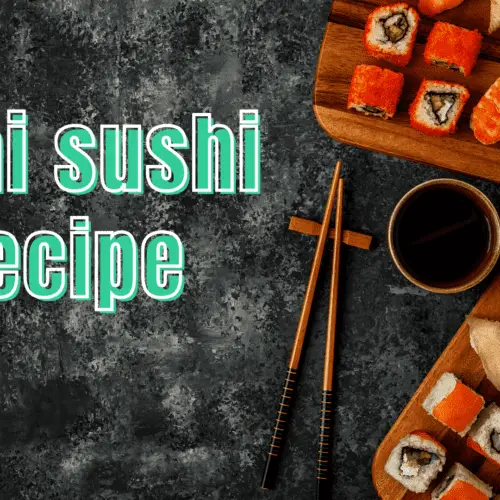
Pressed sushi is another variety that is popular in some parts of the world. This type of sushi is made by pressing fish and rice together with a mold.
The result is a dense brick of sushi that can be cut into pieces.
Oshi sushi or oshizushi is a type of pressed sushi made with a variety of ingredients, such as salmon, mackerel, rice, and vegetables.
This type of sushi originates in Osaka, Japan, and has a rectangular shape, so it’s not like the sushi rolls you’re used to eating.
Oshizushi is often served in a box-shaped container and can be customized to fit the individual’s taste.
Healthy brown rice sushi
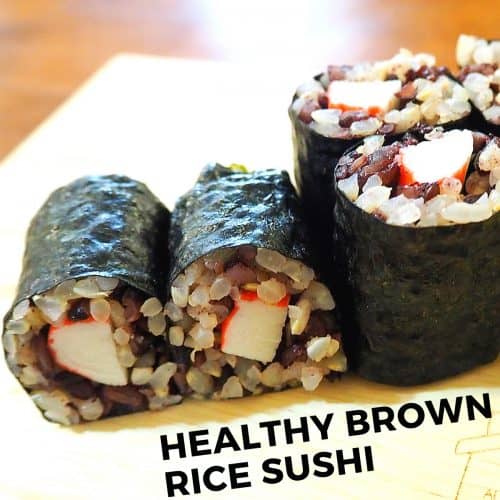
Anyone who’s eaten sushi knows that rice is the main component. And as people become more health conscious, brown rice sushi has become a thing!
As opposed to white rice, brown rice is healthier because it’s a whole grain. Whole grains lower cholesterol and help move waste through the system. They also promote feelings of fullness to keep hunger at bay and they may prevent the formation of blood clots.
They’re also a low glycemic index food. This means they’re less likely to contribute to type 2 diabetes.
Vegan yam and tofu sushi rolls

There’s no name for fishless sushi in general, but the most popular vegetarian roll is kappa maki, or the cucumber roll, which is a staple in many Japanese restaurants. These rolls have a fresh and light taste which is not only great for the palate, but they’re also beneficial to your health!
Sushi without seaweed

If you go to a Japanese restaurant and order sushi without Nori, you might get a few curious glances because Nori is traditionally associated with sushi rolls. Most Japanese diners can’t imagine having this food without it.
But just because an ingredient is traditional doesn’t mean you can’t cook without it. You can make sushi with just vinegared rice and fillings without an internal or external Nori wrap.
You may want to substitute seaweed for several reasons. Seaweed may not be your favorite flavor or may not be readily available at your local grocery store, in which case you can look for alternatives.
Some people enjoy sushi but don’t like the idea of wrapping all the goodness in Nori sheets because of the texture and color.
Whatever the reason, there are great homemade recipes for no-seaweed sushi.
You might be interested in making sushi with other wrap options that aren’t as strong.
Recipes to add to your sushi
Shiso Furikake For Sushi

Furikake is a dry Japanese seasoning that is usually sprinkled on top of rice dishes. It typically consists of nori (seaweed), sesame seeds, salt, sugar, and MSG.
Sometimes furikake will also include dried fish, shredded daikon radish, or other ingredients. Because of the saltiness it goes great with bland plain rice and with fish.
Sushi is also a rice dish that uses a lot of fish, so it’s a marriage made in heaven.
Creamy Homemade Wasabi Sushi Sauce
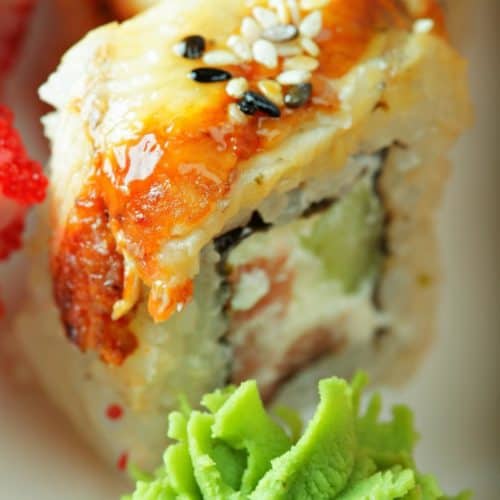
This sauce is the perfect condiment for sushi. Whether you’re using it as a dipping sauce or topping, it’ll add a nice flavor to your sushi rolls.
If you’re using it as a dipping sauce, you can dip the sushi directly into the sauce or use a brush to apply it. If you’re using it as a topping, simply spoon a small amount onto each piece of sushi.
Gari sushi ginger

Often served with sushi or sashimi as a side dish, pickled ginger (“gari” in the Japanese tongue), is made with the purpose to cleanse your palate so your tastebuds can experience the best flavors in your meal.
Gari is a sushi side dish made from thinly sliced young ginger rhizomes that are pickled in rice vinegar that’s been sweetened. It’s one of the most common side dishes of sushi.
The most surprising thing is that it’s very easy to make, yet it’s also a very healthy dish, as you don’t need any preservatives to prepare it!
Other ways to enjoy sushi
Here are some bonus methods you have never tried with sushi, but are incredibly delicious:
Sushi sandwich
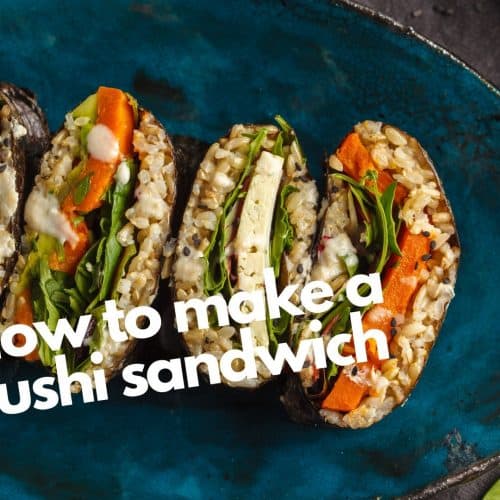
The sushi sandwich is an increasingly popular hybrid between the Western “sandwich”, a Japanese dish called onigirazu, and sushi.
People love this fun dish because it mixes popular ingredients with the flavors of sushi. It’s easy to make this dish at home or buy it from gourmet grocery shops.
Sushi burrito
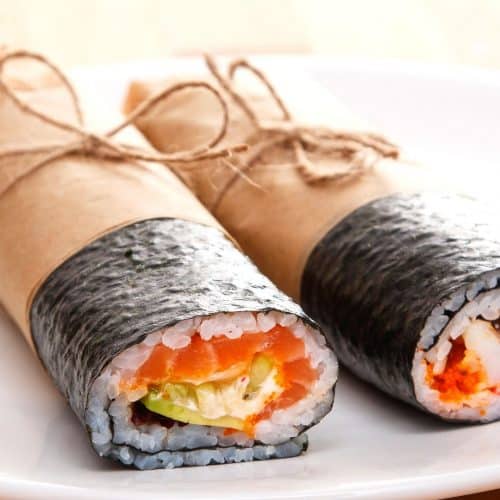
It’s basically a giant sushi roll that is wrapped in nori seaweed like a burrito.
The contents of a sushi burrito can vary, but they often include ingredients like rice, fish, vegetables, and sauces.
The sushi burrito has been a popular modern meal in the USA lately. People love to grab one for lunch as it’s easy and tasty, especially during a busy day at the office.
If you haven’t tried one, you should give it a try. But before that, it might be better for you to get to know this culinary hype first.
The name pretty much says it all. It’s a fusion between Japanese sushi and a Mexican burrito.
Why make sushi?
Sushi is a great way to get your seafood fix. It’s packed with healthy omega-3 fatty acids, and it’s a low-calorie food.
Plus, it’s fun to make! And you can get creative with your sushi rolls, using different fillings and toppings.
How is sushi made?
Sushi is traditionally made on a bamboo mat, which is used to roll the sushi.
The bamboo mat is also known as a makisu, and it’s an important tool for making sushi.
Sushi rice is prepared by rinsing it several times and then cooking it with a specific ratio of water to rice.
Once it’s cooked, sushi vinegar is added to the rice to give it flavor.
The sushi rice is then cooled before it is filled with fish, vegetables, or other ingredients and hand rolled.
A sushi chef will use their hands to mold the sushi with the dried seaweed and then use the bamboo mat to shape it.
Once it’s rolled, the sushi is cut into pieces and served.
Different types of sushi will have different ingredients, but the process of making it is generally the same.
If you would like to make sushi at home, check out these ready-to-go sushi making kits
What you’ll need to make sushi
To make sushi, you’ll need:
– sushi rice
– nori sheets
– a bamboo mat (optional)
– fillings of your choice (raw fish, cooked shrimp, lobster, crab, etc.)
– soy sauce
– pickled ginger (optional)
What kind of fish is in sushi?
There are many different types of fish and seafood that can be used in sushi, but some of the most common include
- tuna
- raw salmon
- yellowtail
- eel
- shrimp
- crab
- imitation crab
- mackerel
- snapper
- roe
- unagi (eel)
What kind of toppings and fillings are in sushi?
The most common toppings for American and Japanese sushi are listed here:
- spicy mayo
- sesame seeds
- dried seaweed
- avocado
- cucumber
- pickled ginger
- scallions
- cream cheese
- soy sauce
- wasabi paste
Conclusion
Sushi is very healthy and fun to make. It may take some time to prepare, but if you get someone to join in it can be a great experience!
Check out our new cookbook
Bitemybun's family recipes with complete meal planner and recipe guide.
Try it out for free with Kindle Unlimited:
Read for freeJoost Nusselder, the founder of Bite My Bun is a content marketer, dad and loves trying out new food with Japanese food at the heart of his passion, and together with his team he's been creating in-depth blog articles since 2016 to help loyal readers with recipes and cooking tips.
